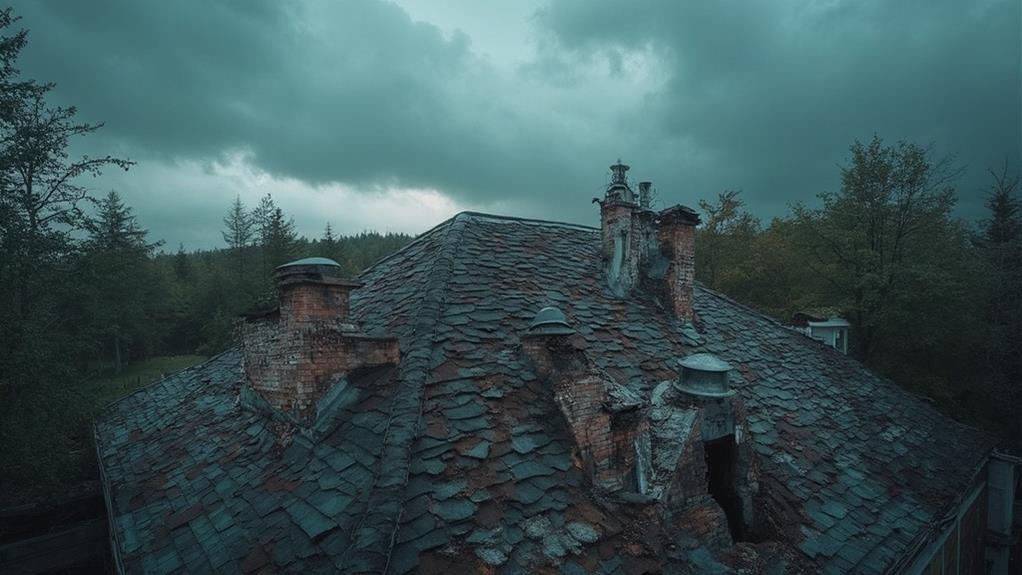Roof ventilation systems play a crucial role in regulating attic temperature and moisture, but they're often overlooked victims of storm damage. High winds, debris impact, and hail can compromise ridge vents, soffit vents, and turbines. Signs of damage include excessive attic moisture, unusual temperature fluctuations, and visible vent damage. Neglecting these issues can lead to mold growth, reduced insulation effectiveness, and structural compromise. Regular inspections using visual assessments, smoke pencils, and infrared cameras can detect ventilation problems early. Proper maintenance and storm-resistant upgrades are essential for protecting your home's ventilation system. Understanding the full impact of storm damage on roof ventilation can save homeowners significant long-term costs and headaches.
Understanding Roof Ventilation Systems
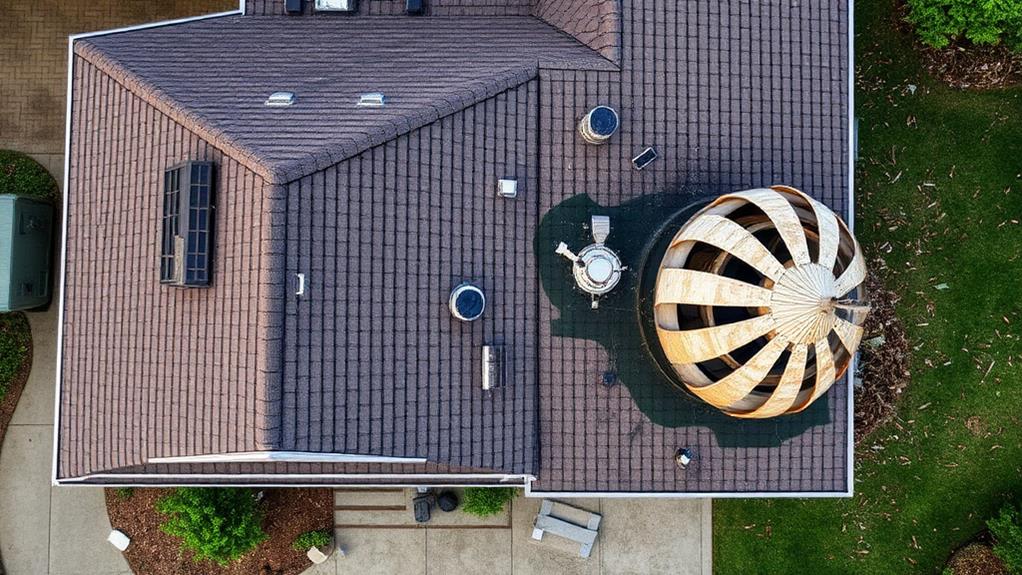
Roof ventilation systems play a crucial role in maintaining the health and longevity of a building's structure. These systems are designed to regulate temperature and moisture levels in the attic space, preventing issues such as heat buildup, condensation, and ice dams. Proper ventilation helps extend the life of roofing materials, reduces energy costs, and protects against mold and mildew growth.
There are two main types of roof ventilation: intake and exhaust. Intake vents, typically located at the eaves or soffits, allow cool air to enter the attic. Exhaust vents, positioned near the roof peak, facilitate the escape of warm, moist air. Common exhaust vent types include ridge vents, gable vents, and roof turbines.
The effectiveness of a roof ventilation system depends on achieving the right balance between intake and exhaust. Building codes often specify minimum ventilation requirements based on attic size and roof pitch. Proper installation and maintenance are essential for optimal performance. Regular inspections can identify potential issues such as blocked vents, damaged components, or inadequate airflow. By understanding the importance and mechanics of roof ventilation systems, homeowners and builders can better protect their investments and ensure a comfortable, efficient living environment.
Common Storm Damage to Ventilation
Severe weather events can wreak havoc on roof ventilation systems, compromising their functionality and potentially leading to costly structural damage. Common types of storm damage to roof ventilation include:
- Wind damage: High winds can dislodge or completely remove ridge vents, soffit vents, and turbine vents. This can leave openings for water infiltration and disrupt proper airflow.
- Debris impact: Flying debris during storms can puncture or crack vents, reducing their effectiveness and creating entry points for pests and moisture.
- Hail damage: Large hailstones can dent or crack metal vents, potentially causing leaks and reducing their efficiency.
- Water damage: Heavy rainfall can overwhelm poorly designed or damaged ventilation systems, leading to water intrusion and potential attic moisture issues.
- Ice dam formation: In colder climates, inadequate ventilation can contribute to ice dam formation, which can damage vents and cause water backup.
- Electrical damage: Lightning strikes can damage powered ventilation systems, rendering them inoperable.
- Clogging: Storms can deposit leaves, twigs, and other debris into vents, obstructing airflow and reducing system efficiency.
Regular inspections and prompt repairs after severe weather events are crucial to maintaining the integrity and functionality of roof ventilation systems.
Signs of Compromised Roof Ventilation
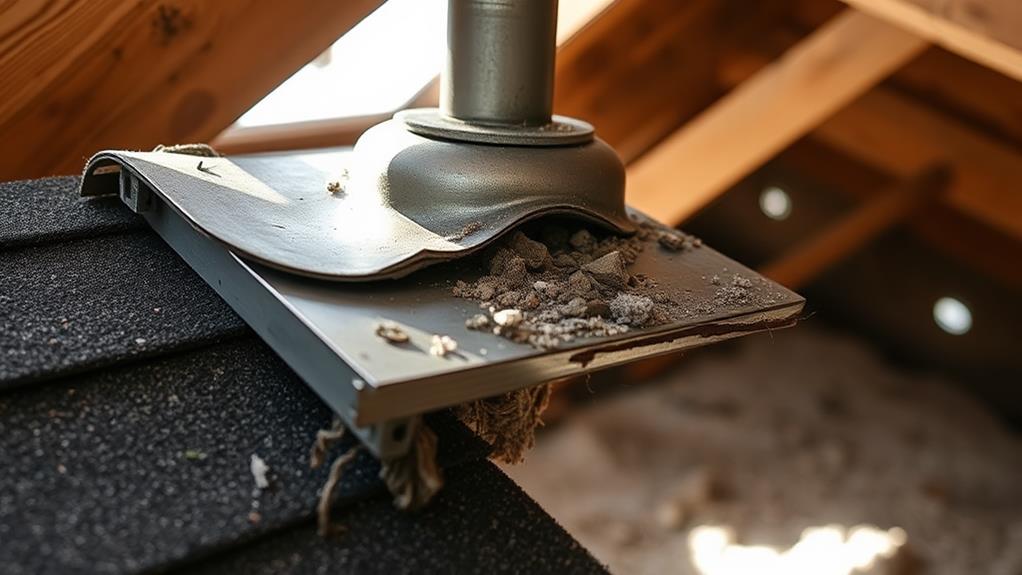
Recognizing the signs of compromised roof ventilation is crucial for maintaining a healthy and efficient home. Homeowners should be vigilant for several key indicators that their ventilation system may be damaged or malfunctioning.
Excessive moisture in the attic is a primary sign, often manifesting as mold growth, damp insulation, or water stains on the ceiling. Unusual temperature fluctuations in the upper floors of the house, particularly excessive heat during summer months, can also indicate poor ventilation.
Visual cues on the roof itself can signal problems. Look for damaged or missing roof vents, warped or curling shingles, and ice dams forming along the eaves in winter. Inside the attic, check for daylight penetrating through the roof boards, which may indicate holes or gaps in the ventilation system.
Unusual odors, especially musty smells, can suggest trapped moisture and potential mold growth. Additionally, higher-than-normal energy bills may result from an overtaxed HVAC system compensating for poor ventilation. If any of these signs are present, it's essential to consult a roofing professional to assess and address the ventilation issues promptly.
Consequences of Neglecting Ventilation Damage
Ignoring ventilation issues can lead to a cascade of serious problems for homeowners. When roof ventilation damage goes unaddressed, it compromises the entire roofing system's integrity and efficiency. Moisture accumulation becomes a significant concern, as poor ventilation traps humidity in the attic space. This excess moisture can lead to wood rot, weakening the roof's structural components and potentially causing sagging or even collapse in extreme cases.
Furthermore, inadequate ventilation creates an ideal environment for mold and mildew growth. These fungi not only damage building materials but also pose health risks to occupants, potentially triggering respiratory issues and allergies. The insulation's effectiveness is also compromised, resulting in reduced energy efficiency and increased utility costs.
During winter, poor ventilation can contribute to ice dam formation, causing water to back up under shingles and leak into the home. Neglected ventilation damage accelerates shingle deterioration, shortening the roof's lifespan and necessitating premature replacement. Additionally, many manufacturers may void roofing material warranties if proper ventilation is not maintained, leaving homeowners financially vulnerable in the event of future issues.
Inspection Techniques for Ventilation Systems
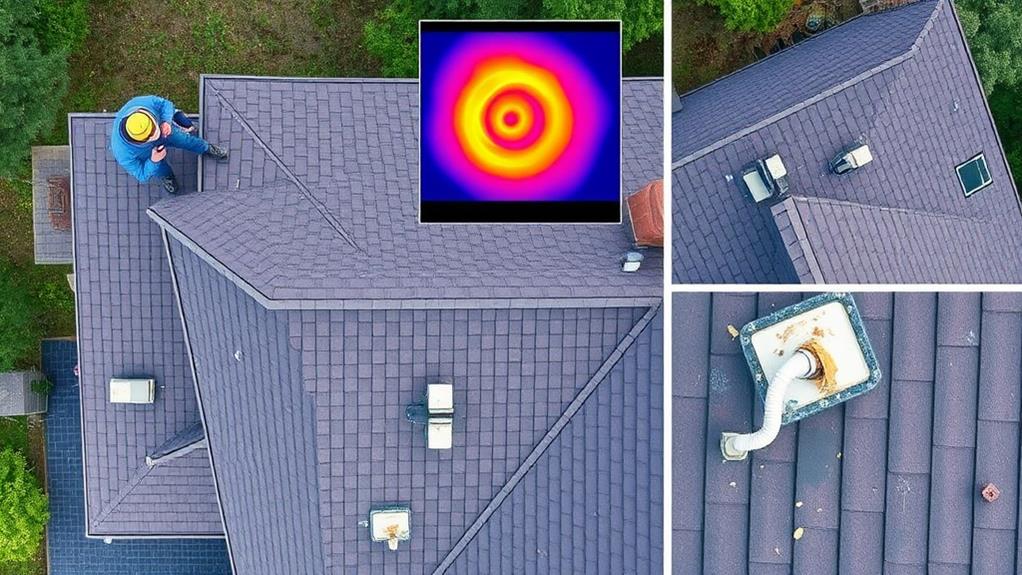
Effective inspection of roof ventilation systems is crucial for maintaining a healthy and efficient home. Regular examinations can identify potential issues before they escalate into costly repairs. Begin by visually inspecting the roof's exterior, looking for damaged or missing vents, loose fasteners, or signs of water infiltration around vent openings. Use binoculars for a closer view without risking personal safety.
For a more thorough assessment, access the attic space. Check for proper insulation distribution, ensuring vents aren't blocked. Look for signs of moisture, such as water stains, mold, or wet insulation. Use a hygrometer to measure humidity levels, which should ideally be below 50%. Inspect soffit vents for blockages and verify that baffles are correctly installed to maintain airflow.
Consider using a smoke pencil to test airflow patterns within the attic. This can reveal dead spots or areas of inadequate ventilation. For a comprehensive evaluation, employ an infrared camera to detect temperature variations that may indicate insulation gaps or moisture issues. Professional inspectors may also use blower door tests to assess overall home ventilation efficiency, including the roof system's performance.
Repair and Replacement Options
Roof ventilation repair and replacement options vary depending on the severity of the issue and the type of system installed. For minor damage, such as loose shingles or small cracks, simple repairs may suffice. These can include resealing joints, replacing individual components, or patching holes in vents.
More extensive damage often requires partial or complete replacement of the ventilation system. This may involve installing new soffit vents, ridge vents, or powered attic fans. In some cases, upgrading to a more efficient system, like a solar-powered attic fan or a whole-house ventilation system, can improve overall roof performance and energy efficiency.
When replacing ventilation components, it's crucial to maintain proper balance between intake and exhaust vents. This ensures optimal airflow and prevents moisture buildup. Homeowners should consult with roofing professionals to determine the most suitable repair or replacement option for their specific situation.
For older homes or those with outdated ventilation systems, a comprehensive roof inspection may reveal the need for a complete overhaul of the ventilation strategy. This could involve redesigning the entire system to meet current building codes and energy efficiency standards.
Preventive Measures for Future Storms
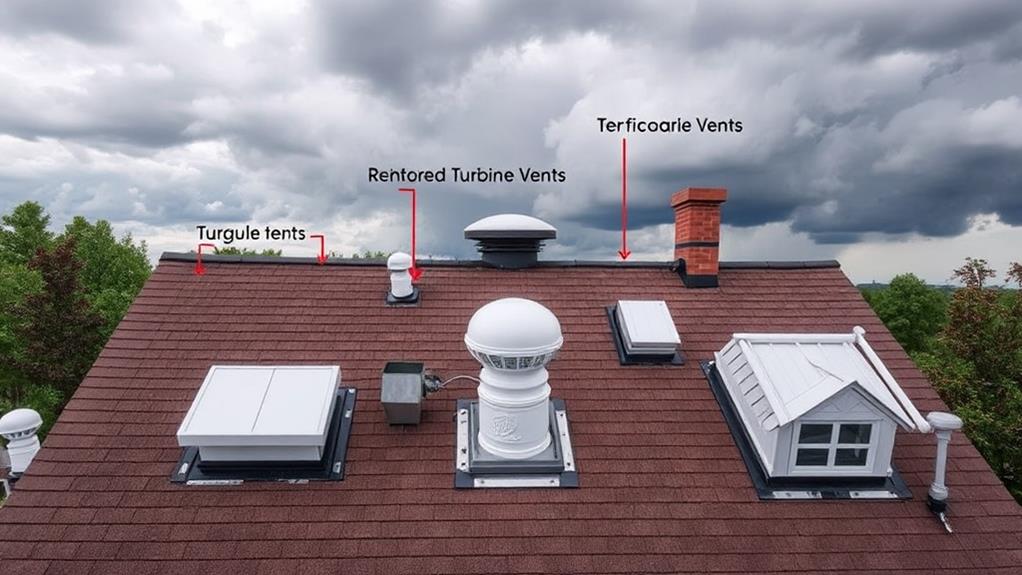
Implementing preventive measures is crucial for safeguarding roof ventilation systems against future storms. Regular inspections and maintenance are essential to identify potential vulnerabilities before severe weather strikes. Homeowners should ensure that all vents are securely fastened and free from debris, which can become projectiles during high winds. Installing impact-resistant covers or screens over vents can prevent water intrusion and damage from flying debris.
Reinforcing the roof structure itself is another critical step. This may include adding hurricane straps or clips to secure trusses and rafters to the walls, as well as strengthening the roof decking with additional fasteners. Applying a waterproof underlayment beneath shingles or tiles can provide an extra layer of protection against water infiltration.
For areas prone to extreme weather, consider upgrading to storm-rated ventilation products designed to withstand high winds and heavy rain. These may include specialized ridge vents, gable vents, or soffit vents engineered to maintain proper airflow while resisting storm damage. Additionally, trimming nearby trees and removing overhanging branches can significantly reduce the risk of impact damage to roof ventilation systems during storms.
Frequently Asked Questions
How Much Does It Cost to Replace a Damaged Roof Ventilation System?
The cost to replace a damaged roof ventilation system varies significantly, typically ranging from $300 to $1,500. Factors influencing the price include the type of system, roof size, labor costs, and any additional repairs needed.
Can I Install a Roof Ventilation System Myself?
Approximately 90% of homes in the U.S. have inadequate attic ventilation. While DIY installation is possible for some homeowners, professional installation is recommended due to the complexity of proper placement and potential safety risks involved.
Are There Eco-Friendly Options for Roof Ventilation Systems?
Yes, eco-friendly roof ventilation options exist. Solar-powered attic fans, wind-driven turbine vents, and reflective ridge vents are energy-efficient choices. These systems improve air circulation, reduce cooling costs, and minimize environmental impact while maintaining optimal roof ventilation.
How Often Should Roof Ventilation Systems Be Professionally Inspected?
Professional inspections of roof ventilation systems should be conducted annually. However, homeowners should also perform visual checks after severe weather events. Regular maintenance and timely inspections can prevent costly repairs and ensure optimal system performance.
Do All Types of Roofs Require Ventilation Systems?
According to industry experts, 90% of homes in North America have inadequate attic ventilation. Not all roofs require ventilation systems, but most do. Exceptions include some flat roofs, cathedral ceilings, and certain specialized roofing designs with built-in airflow mechanisms.
Conclusion
Ironically, while homeowners diligently inspect for visible storm damage, the silent guardians of their roofs often go unnoticed. Roof ventilation systems, crucial for a home's longevity, frequently fall victim to nature's wrath without fanfare. By overlooking these essential components, well-meaning property owners may inadvertently nurture the very problems they seek to prevent. Only through vigilant inspection and maintenance can the unsung heroes of home protection fulfill their vital role in safeguarding dwellings from the insidious effects of poor ventilation.
